Kuromitsu is a Japanese simple syrup made from black sugar harvested in Okinawa. It’s got an extremely sweet and complex flavor that’ll add both character and sweetness to any dish you desire.

What is Kuromitsu (Black Sugar Syrup)
Black sugar syrup, also known as Kuromitsu, is a sweet and distinctive Japanese syrup made from unrefined black sugar. It has a flavor similar to molasses but milder and is commonly used in traditional Japanese desserts like mochi and dango, as well as in modern recipes for cocktails and baked goods. Not only does black sugar syrup add a rich depth of flavor to your dishes, but it’s also packed with minerals and nutrients that are beneficial for your health. Its unique flavor and versatility make it a popular ingredient in many cuisines around the world.
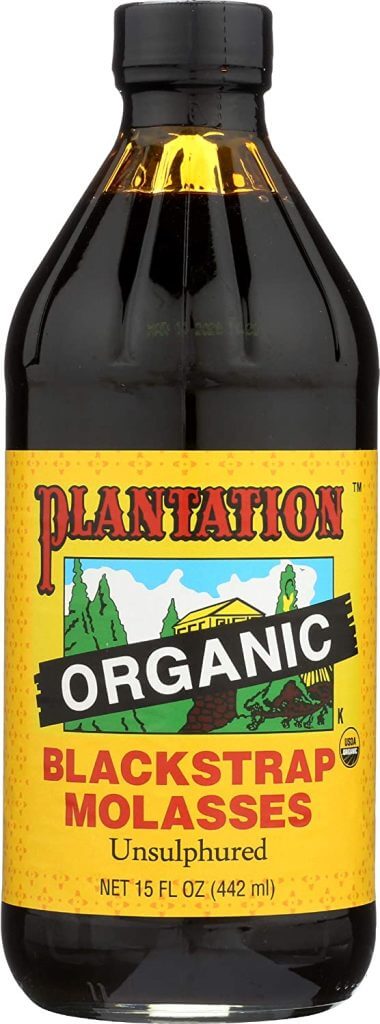
Molasses is a thick, dark syrup that is a byproduct of the sugar-making process.
It can be made from sugarcane or sugar beets, and is created when these plants are crushed to extract their juice, which is then boiled to make sugar crystals.
The remaining liquid, which is called molasses, is a mixture of water, minerals, and various sugars including glucose and fructose.
Molasses has a distinct, rich, and complex flavor that is often described as smoky, earthy, or even bitter.
Molasses is commonly used as a sweetener and a flavoring agent in a variety of foods and beverages, including baking, sauces, marinades, and alcoholic drinks.
It’s also a good source of various minerals such as calcium, magnesium and potassium.
Is That What Gives Kuromitsu It’s Dark Color?
The color of sugar can vary depending on the type of sugar and the way it is processed.
One of the main factors that can affect the color of sugar is the degree of caramelization, which is the process of heating sugar until it turns brown.
The longer the sugar is heated, the darker the color will become.
Another factor is the presence of impurities such as molasses, which is a byproduct of the sugar-making process.
Sugars that retain a higher amount of molasses will be darker in color.
In the case of kuromitsu, the black color comes from the high content of molasses and mineral in the sugarcane.
The sugar is also heated at high temperatures to create the dark color.
Different Types of Brown Sugar
There are several different types of brown sugar, each with its own unique flavor and texture. Some of the most common types include:
- Light brown sugar: This type of sugar is made by mixing white sugar with molasses. It has a milder flavor than dark brown sugar and is often used in baking.
- Dark brown sugar: This type of sugar is made by adding more molasses to light brown sugar. It has a stronger, more complex flavor and is often used in recipes that call for a deeper caramel or molasses flavor, such as gingerbread, barbecue sauces, and marinades.
- Muscovado sugar: This is a type of unrefined brown sugar that has a strong, earthy flavor and a high moisture content. This is likely the closest in flavor you’ll get to Okinawan black sugar (if you don’t want to buy this one)
- Demerara sugar: This type of brown sugar has a large, light-brown crystals, a crunchy texture and a subtle molasses flavor. Goes great with baked foods, yogurt, and oatmeal.
- Turbinado sugar: This is another type of unrefined brown sugar with large, light-brown crystals. It has a milder flavor than muscovado sugar, and is often used as a topping for baked goods and desserts.
It’s worth noting that each type of brown sugar has a different flavor and texture, so it’s best to use the type of brown sugar specified in a recipe to achieve the desired result. They’re not that interchangeable unfortunately.
Benefits of Brown Sugars
Brown sugars like kokutou (kuromitsu), are generally considered to be a ‘healthier’ alternatives to refined white sugar.
Some of the potential benefits of dark sugars include:
- Higher mineral content: Dark sugars, such as molasses, retain more of the natural minerals present in the sugarcane or sugar beet, including calcium, magnesium, potassium, and iron.
- Lower glycemic index: The glycemic index (GI) is a measure of how quickly a food raises blood sugar levels. Thanks to molasses, dark sugars tend to have a lower GI than refined white sugar, but not by much unfortunately.
- Richer flavor: Dark sugars have a more complex flavor than refined white sugar, with notes of caramel, toffee, earthy, nut and even smoke. This can make them a great choice for recipes where you want to add depth and complex flavor.
- Versatility: Dark sugars can be used in a variety of ways in cooking and baking, from sweetening drinks and marinades to being used as a topping for desserts. Being a solid form of a sweetener, it’s easy to bake with.
Brown Sugar vs White Sugar:
which is healthier?
It’s important to note that regardless of whether you choose dark or white sugar, consuming too much sugar can be harmful. Excess sugar intake is linked to a variety of health problems such as obesity, type 2 diabetes, and heart disease. Therefore, it’s important to consume any type of sugar in moderation.
It’s also worth mentioning that there are other natural sweeteners that are may have other nutritional benefits that white sugar lacks. For example, raw honey, maple syrup, or raw dates. These natural sweeteners contain vitamins, minerals and antioxidants, and also have a lower glycemic index than refined white sugar.
Which is Sweeter?
Brown sugars, like kokutou generally have a stronger and more complex flavor than refined white sugar. The flavor of dark sugar is often described as richer, smokier, and with more depth compared to the neutral taste of white sugar.
In terms of sweetness, dark sugar is not necessarily sweeter than white sugar.
The sweetness of sugar is measured by its sucrose content, and both dark and white sugar have the same level of sucrose.
The difference in taste is mainly due to other natural compounds and minerals like glucose, fructose, and mineral retained in dark sugar during the processing.
Also, the way sugar is used in a recipe can affect the perception of sweetness.
For example, using dark sugar in a recipe can add a depth of flavor that enhances the sweetness, making it taste sweeter than white sugar alone.

5 Interesting Facts About Sugar Cane – The Plant
- Sugar cane is a tropical and subtropical crop that is grown in many parts of the world. Brazil is the world’s largest producer of sugarcane, producing over 700 million tons annually, while Japan is one of the smallest at about 1.3 million tons.
- Sugarcane can be grown in various climates and soil types, but it thrives in areas with high temperatures, high humidity, and ample rainfall. That’s why it grows well in the Okinawan islands of Japan.
- Sugarcane has a long history in Japan, dating back to the 8th century. However, it was not widely cultivated until the 19th century, when it was introduced as a cash crop to help fund modernization efforts.
- The process of producing sugar can be broken down into 7 steps:
- Harvesting: Sugarcane is typically harvested by hand or using mechanical harvesters. The stalks are cut close to the ground and transported to the sugar mill.
- Extraction: The sugarcane is then crushed to extract the juice. This can be done by grinding the stalks between rollers or by using a diffuser, a machine that uses water to extract the juice.
- Clarification: The extracted juice is then clarified to remove impurities such as dirt, leaves, and other debris. This is typically done by adding lime and other chemicals to the juice, which causes the impurities to settle out.
- Evaporation: The clarified juice is then heated to remove water, leaving a thick syrup. This process can be done in several stages, using multiple evaporators.
- Crystallization: The syrup is then cooled and seeded with sugar crystals. As the syrup cools, the sugar crystals begin to form and grow.
- Centrifugation: The mixture of sugar crystals and syrup is then spun in a centrifuge to separate the crystals from the syrup. The crystals are washed and dried to remove any remaining syrup.
- Refining: The sugar crystals are then further processed to remove impurities and achieve the desired level of purity. This process typically involves passing the sugar through a series of filters and then adding bone char or activated carbon to remove any remaining impurities.
- Sometimes in order to make brown sugar, molasses is added back to white sugar… Go figure…
how to make kuromitsu (黒蜜 black sugar syrup)
Kuromitsu is a Japanese simple syrup made from black sugar harvested in Okinawa. It’s got an extremely sweet and complex flavor that’ll add both character and sweetness to any dish you desire.
- Prep Time: 10
- Cook Time: 5
- Total Time: 15 minutes
- Yield: 1/2 cup
- Category: syrup
- Cuisine: japanese
Ingredients
⦁ 100 grams Black sugar kurosatou 黒砂糖, Okinawan black sugar
⦁ 1/4 cup water
⦁ 1 tablespoon boiling water
Instructions
- In a microwave safe bowl, mix the sugar and water together and try to break down the clumps as small as possible.
- Microwave the bowl for about 2-3 minutes to melt the sugar.
- If not completely melted, mix and microwave more in 15 second increments until most of the sugar is melted.
- Add the remaining tablespoon of hot water to help dissolve any remaining pieces.
- Set aside and allow to cool.
Notes
Kuromitsu should be stored in the refrigerator and used within 5-7 days. As there are no preservatives, it can easily spoil if unused and or left out at room temp.
How to use Kuromitsu
Kuromitsu can be used for many traditional Japanese desserts and even non-japanese foods where you want a nice complex sweet flavor.
For some Japanese cooking inspiration, check out these recipes:
How will you use this syrup?
With japanese dessert or something different?
Let me know in the comments.


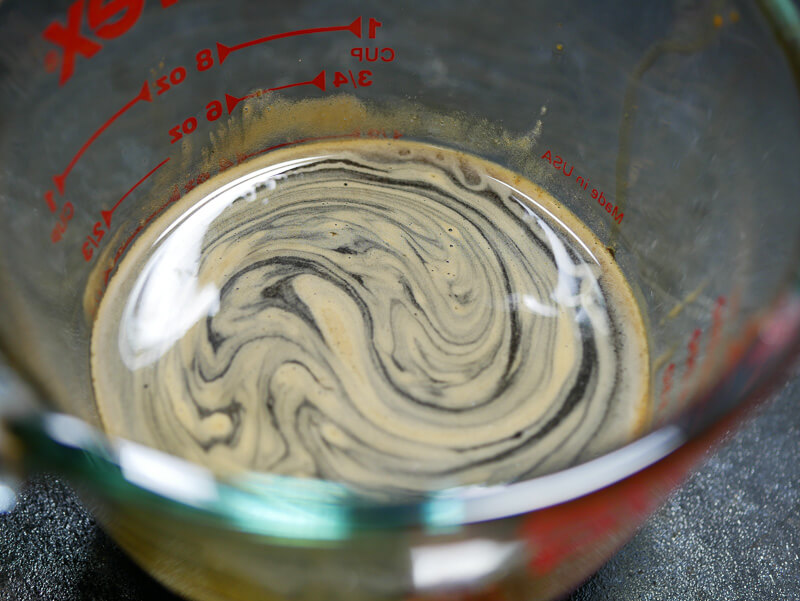






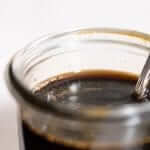
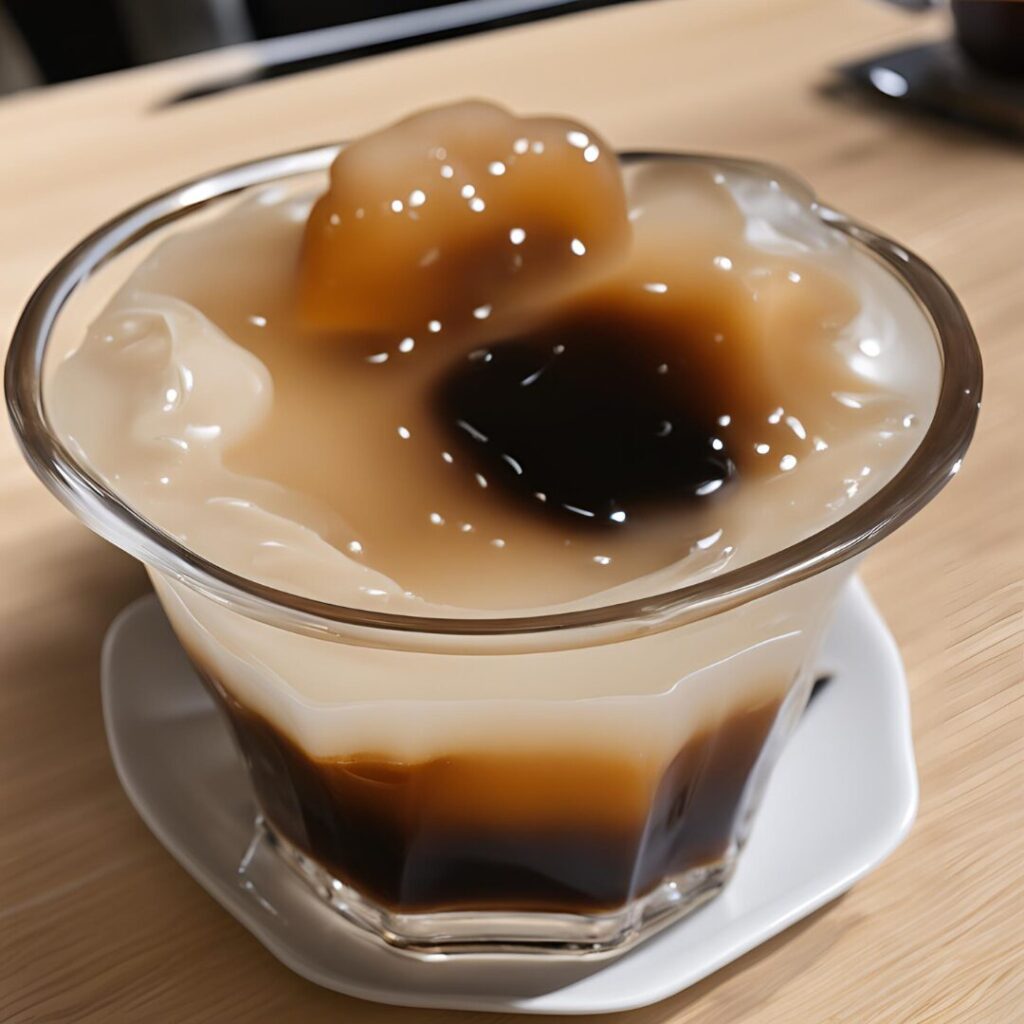
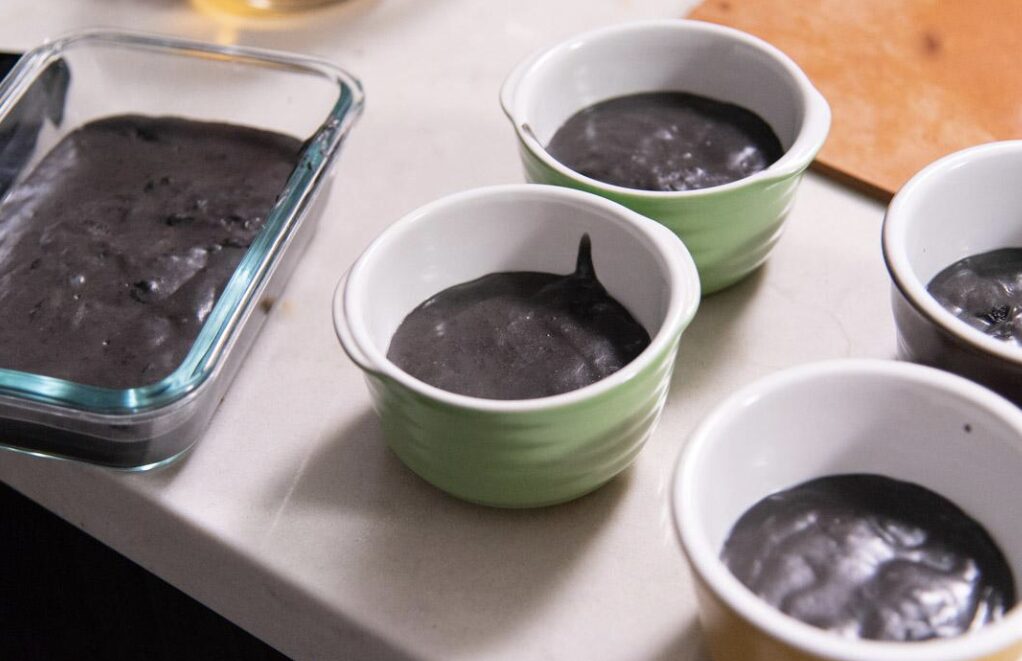
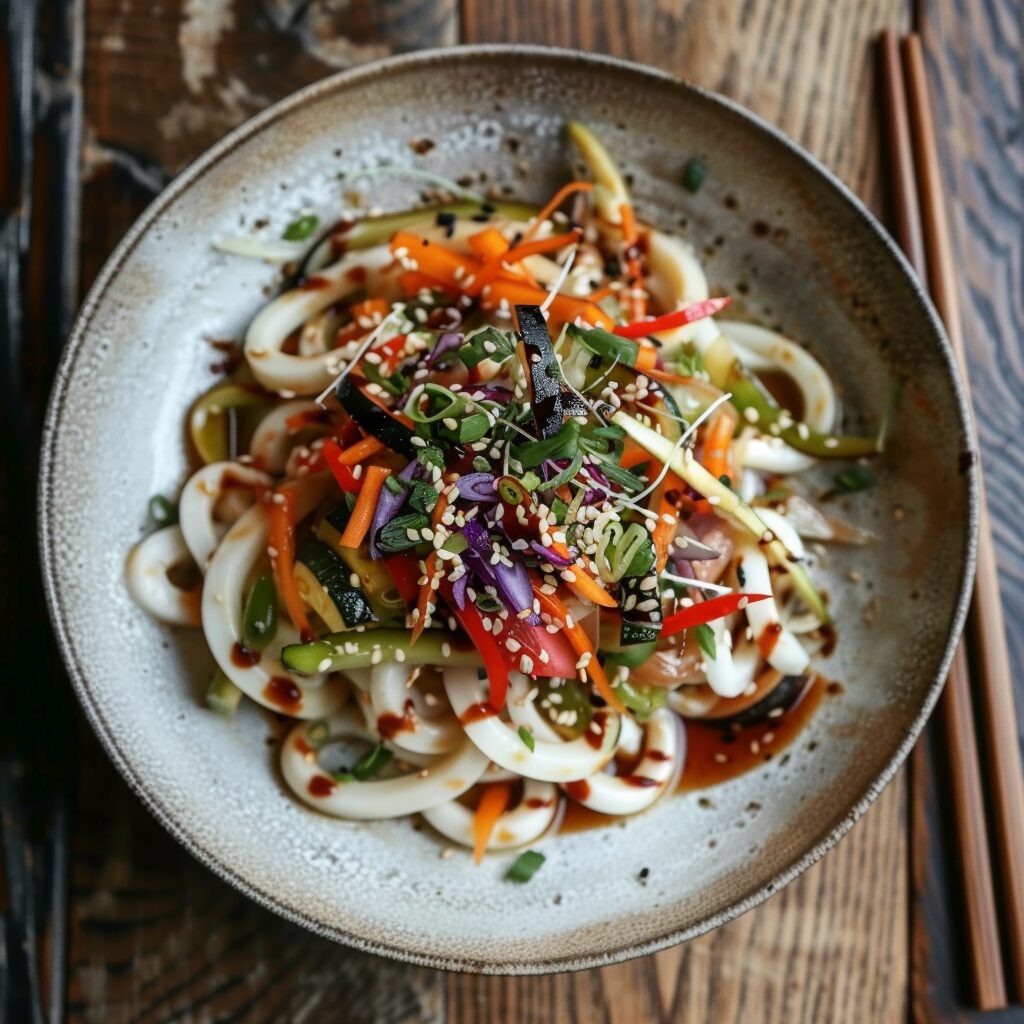
Konnichiwa! (Hello!) I'm Pat Tokuyama, a Japanese tofu cookbook author, who travels for music, food, and adventure. If you like Japanese tea, checkout some of the newestorganic japanese tea, matcha bowls and noren and more!
** Curious about the Plant Based Japanese Cooking Club? ** Learn more here!